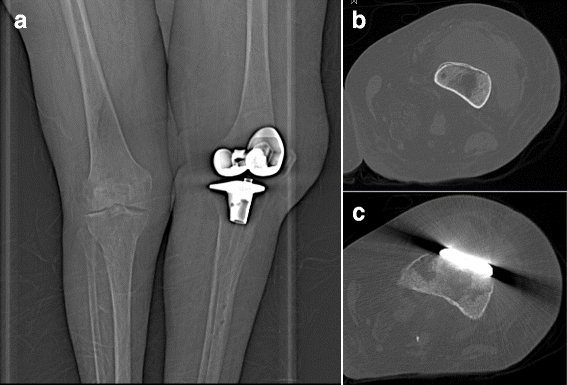Prosthetic joint infection caused by Pasteurella multocida: a case series and review of literature
- PMID: 27544345
- PMCID: PMC4992566
- DOI: 10.1186/s12879-016-1763-0
Prosthetic joint infection caused by Pasteurella multocida: a case series and review of literature
Abstract
Background: Pasteurella multocida is a well-recognized zoonotic agent following dog or cat bites or scratches. Nevertheless, prosthetic joint infection caused by P. multocida are rarely reported.
Method: We report here a series of six cases of prosthetic joint infection caused by P. multocida managed at a referral centre for the treatment of bone and joint infection in southern France. We also reviewed the 26 cases reported in literature.
Results: The mean age of our cases was 74 years [±8.2, range 63-85]. In majority of our cases (5 cases) were associated with knee prostheses and one case with a hip prosthesis. Most of cases occurred after cat or dog scratches or licks or contact. Diagnoses of prosthetic joint infection caused by P. multocida were made by positive cultures of surgical biopsies or needle aspiration. Mean time delay between prosthetic joint implantation and infection onset was 7.6 years (±5.12 years, range 2-17). Local inflammation, which occurred in all six cases, was the most frequent clinical symptom, followed by pain in five cases, fever and swollen joints in four cases, and a fistula with purulent discharge inside the wound in two cases. The mean time of antibiotic therapy was 8 months. Surgical treatment with prosthesis removal was performed in three cases. Six of our cases were in remission without apparent relapse at 3 years after end of treatment.
Conclusion: Prosthetic joint infections caused by P. multocida usually occur after animal scratches or bites, but can occasionally occur after a short animal lick. These infections are usually resulting from a contiguous infection and localized in the knee. An early antibiotic therapy after surgical debridement could avoid prosthetic withdrawal, notably in elderly patients. Patients with prosthetic joints should be warned that animals are potential sources of serious infection and urgent medical advice should be sought if they are bitten or scratched.
Keywords: Arthroplasty; Bacteria; Human; Infection; Pasteurella multocida; Prosthetic joint infection; Zoonosis.
Figures
References
-
- Lipsky BA, Berendt AR, Cornia PB, Pile JC, Peters EJG, Armstrong DG, et al. Executive summary: 2012 Infectious Diseases Society of America clinical practice guideline for the diagnosis and treatment of diabetic foot infections. Clin Infect Dis. 2012;54:1679–1684. doi: 10.1093/cid/cis460. - DOI - PubMed
Publication types
MeSH terms
Substances
LinkOut - more resources
Full Text Sources
Other Literature Sources
Medical
Miscellaneous


